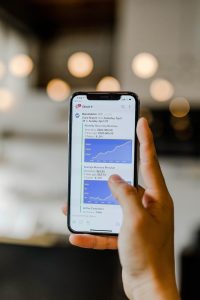Forex, also known as foreign exchange or FX, is a decentralized global market where currencies are traded. It is the largest financial market in the world, with an average daily trading volume of about $5.3 trillion. Forex trading is based on the principle of buying and selling currencies in pairs. The price of one currency is always quoted in terms of another currency. The difference between the two currencies is known as the exchange rate.
Forex trading is done through an electronic network of banks, financial institutions, and individual traders. The market is open 24 hours a day, five days a week, and operates across different time zones. The forex market is highly volatile, and prices can fluctuate rapidly based on economic, political, and social factors.
One of the key terms used in forex trading is ‘Pip’ or ‘Points.’ Pip stands for Percentage in Points, and it is the smallest unit of measurement for a currency pair. It represents the fourth decimal place in most currency pairs, except for the Japanese yen, where it represents the second decimal place. For example, if the EUR/USD pair moves from 1.2000 to 1.2010, it has moved ten pips or ten points.
Pips are used to calculate the profit or loss in a forex trade. The profit or loss is calculated based on the difference between the entry price and the exit price of a trade. For example, if a trader buys the EUR/USD pair at 1.2000 and sells it at 1.2010, the profit would be ten pips. However, if the trader sells the EUR/USD pair at 1.2000 and buys it back at 1.2010, the loss would be ten pips.
Another important term in forex trading is ‘Leverage.’ Leverage is a tool that allows traders to control a large amount of money with a small investment. It is expressed as a ratio, such as 1:100, which means that for every dollar invested, the trader can control $100 in the market. Leverage can increase profits, but it also increases the risk of losses.
Forex trading involves different types of orders, such as market orders, limit orders, stop-loss orders, and trailing stop orders. A market order is an order to buy or sell a currency pair at the current market price. A limit order is an order to buy or sell a currency pair at a specific price or better. A stop-loss order is an order to close a trade at a specific price to limit losses. A trailing stop order is an order to close a trade at a specific price, but the order moves in the trader’s favor as the price of the currency pair moves.
Forex trading also involves different strategies, such as trend trading, range trading, and breakout trading. Trend trading is a strategy that involves identifying the direction of the market and trading in the same direction. Range trading is a strategy that involves identifying support and resistance levels and trading within that range. Breakout trading is a strategy that involves identifying key levels and trading when the price breaks out of that level.
In conclusion, Forex is a decentralized global market where currencies are traded. It is the largest financial market in the world, with an average daily trading volume of about $5.3 trillion. Forex trading is based on the principle of buying and selling currencies in pairs. Pips and leverage are important terms used in forex trading. Forex trading involves different types of orders and strategies. It is a highly volatile market that requires knowledge, skill, and discipline to succeed.






